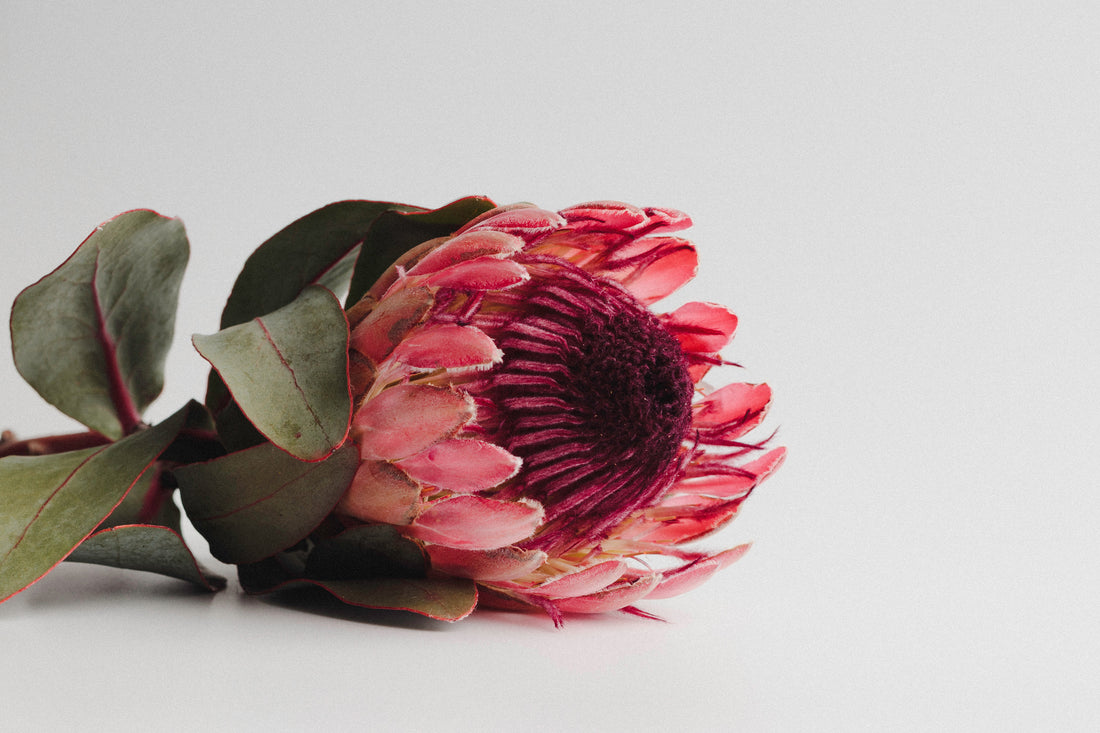
Proteas: The Exotic Blooms with a Rich Heritage
Share
Proteas have always captured the imagination of flower lovers with their unique, almost otherworldly shapes and varied hues. Often regarded as the embodiment of change and hope, these ancient flowers have a rich history that goes beyond their visual allure. As a Floral Botanical Stylist deeply committed to sustainable floristry, I find proteas not only visually captivating but also an ode to the wonders of Mother Nature. Here's why you should consider incorporating proteas into your floral collection or arrangements.
Origin & History
Proteas are native to South Africa and are a significant part of the fynbos, a unique collection of vegetation that makes up the Cape Floral Kingdom. Named after the Greek god Proteus, who could change his form at will, proteas come in various shapes and sizes, each species a true testament to the god's versatility.
Symbolism
In South Africa, the protea stands as a national symbol, reflecting the country's diversity and resilience. But the symbolism of the protea extends beyond geographical boundaries, often representing transformation, diversity, and courage. They are particularly meaningful in mixed arrangements where they stand out, symbolizing our individual uniqueness and how we bring something irreplaceable to the community.
Types of Proteas
There are over 1,600 types of protea species, but some popular varieties include:
- King Protea: The largest in the family, it features a majestic crown of petals and symbolizes courage.
- Queen Protea: A bit smaller but equally grand, representing elegance and poise.
- Pincushion Protea: Known for its spiky appearance, it is often used in exotic arrangements.
- Sugarbush: Often used in dried flower arrangements, this type evokes a sense of nostalgia and warmth.
How to Incorporate Proteas in Sustainable Floristry
At our floral boutique, sustainability is more than a trend; it's our commitment to the planet. Proteas, being naturally resilient and requiring less water, align well with sustainable floral practices. They are hardy and long-lasting, meaning they don’t require frequent replacements, reducing waste.
Tips for Care
- Water: Proteas don't need much water. In fact, overwatering can kill them.
- Light: They thrive in well-lit environments but can also manage under partial shade.
- Soil: Drainable soil is ideal as they don’t like to be waterlogged.
Proteas aren't just a pretty face in the floral world. Their enduring allure, rich symbolism, and compatibility with sustainable floristry practices make them a meaningful choice for any occasion. Whether you're looking to send a thoughtful gift or enrich your living space, consider the protea: a flower that speaks to the heart and is kind to the Earth.
